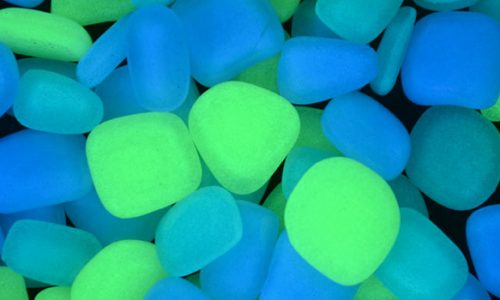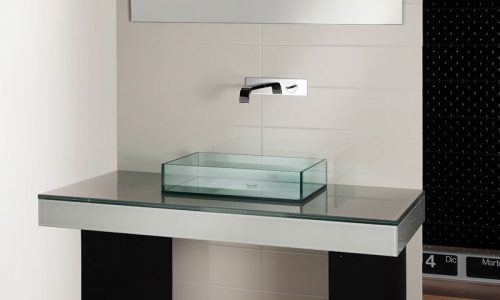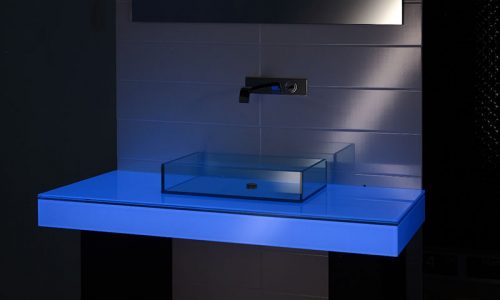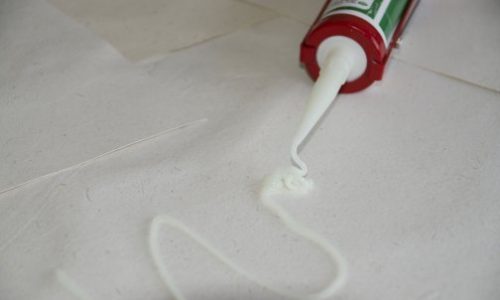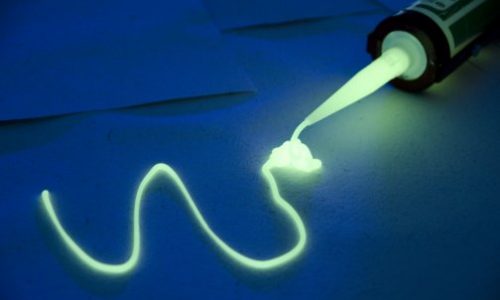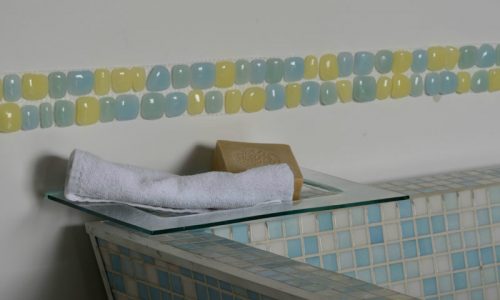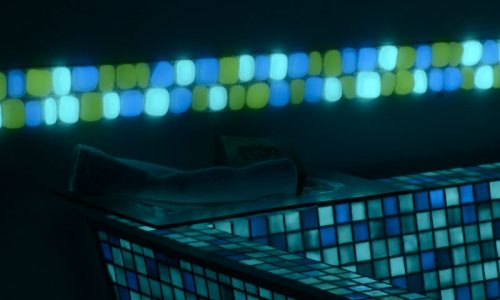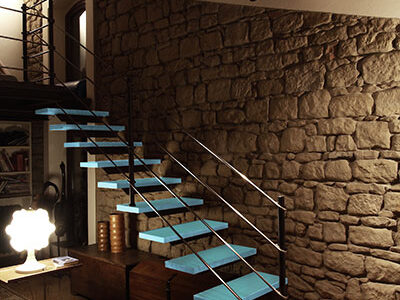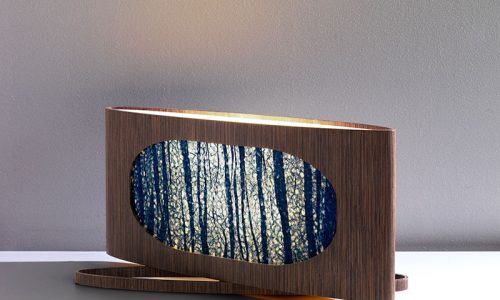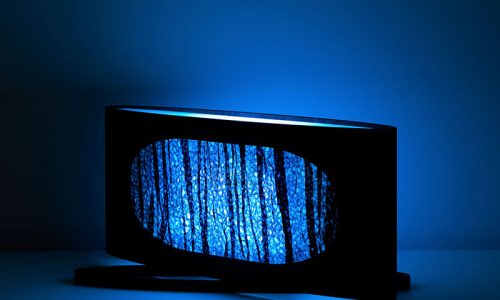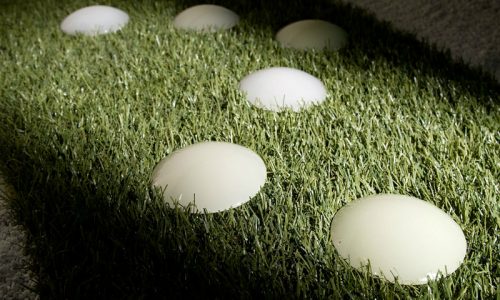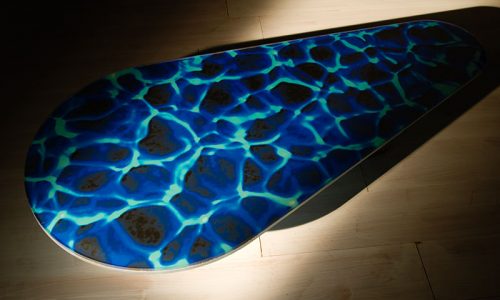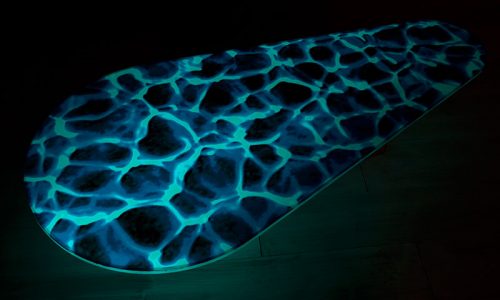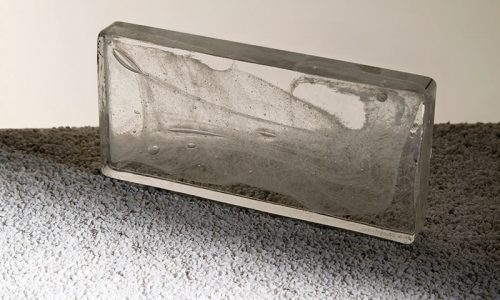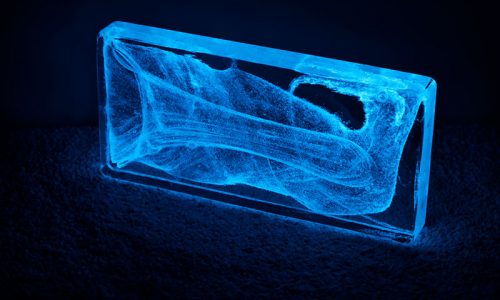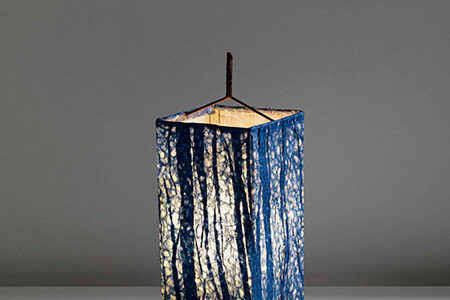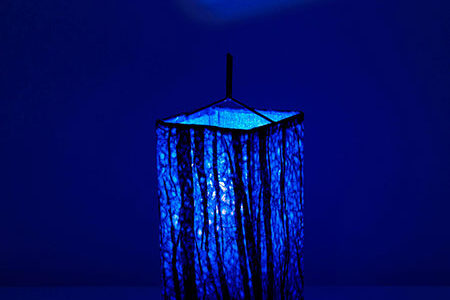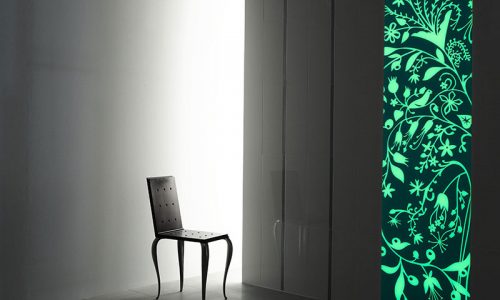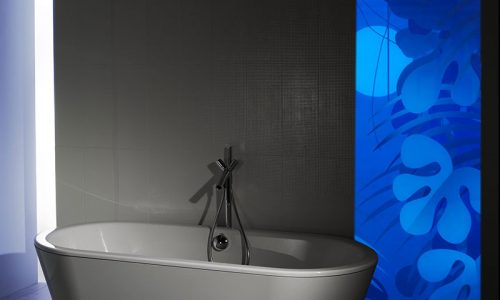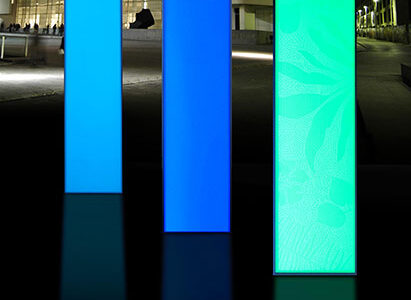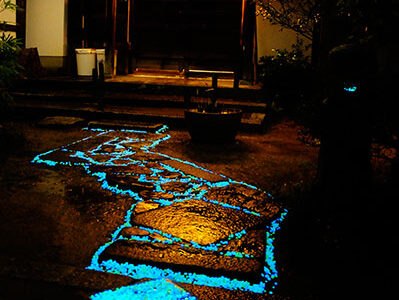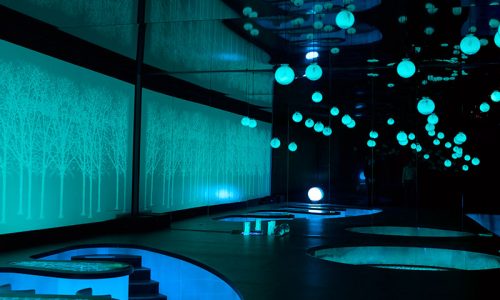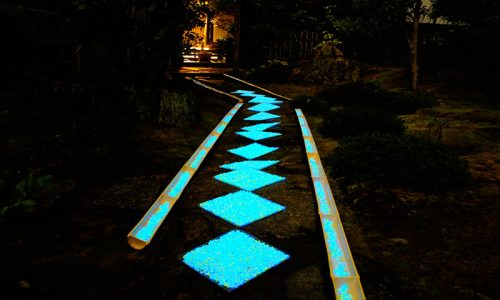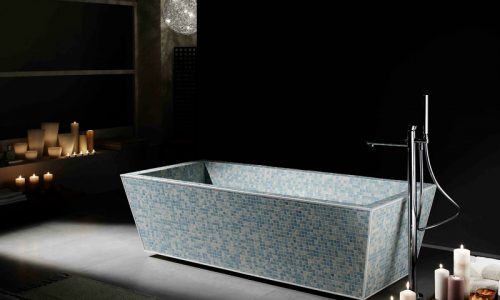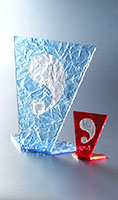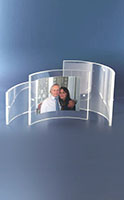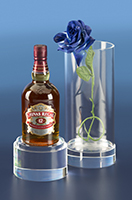Special materials
Photoluminescent products
Photoluminescence is a distinctive physical property of rare inorganic aluminates found in nature, capable of “capturing” and processing sunlight or artificial light and then emitting it in the dark for up to eight hours before fading out.
Faraoni srl uses specially selected pigments of these materials that are REACH (the recent European regulation governing the use of chemicals) certified, making it possible to apply photoluminescence to an almost unlimited range of objects: lamps, glass, mosaics, ceramics, resins, silicones, cements, metals, etc. The visual potential of any material can be enhanced by the use of photoluminescent pigments and luminescence.
The flexibility of luminescent pigments makes them ideal for new design applications. Light becomes part of the project, enhancing the emotional impact of objects that come alive in the dark.
It is already easy to imagine how materials with these properties can be used to develop a myriad of custom projects across many application fields.
Faraoni srl works with photoluminescent applications and specializes in all application areas. Some of the many areas in which Faraoni srl works include: design, furnishings, safety, and building materials, providing quality technical solutions and aesthetics that can also be created together with designers, architects, and artists to make full use of the potential of luminescence.
Special features of luminescent products
Safety
In the event of black outs, the luminescent pigments used by Faraoni srl provide lighting for escape routes, emergency exits, and stairwells without the need for generators or other light sources.
Energy savings
Private and public outdoor spaces, such as gardens, terraces, squares and pavements, as well as swimming pools, fountains or shop windows can save up to 90% over traditional electric consumption means. Faraoni srl uses natural materials treated with photoluminescent pigments that are totally safe and environmentally friendly, also utilizing a production process which is environmentally friendly.
The energy savings from the use of photoluminescent pigments also helps to reduce CO2and promotes a culture of eco-sustainability.
Certified safety
The photoluminescent pigments used by Faraoni srl are non-perishable, non-toxic and non-radioactive. The content of heavy metals is well below the limits set out in European and American standards for categories of products such as cosmetics and toys.
Product lifespan
The physical principle of photoluminescence is theoretically eternal. Laboratory tests show that photoluminescent pigments do not degrade even minimally after 10 years. Another factor is the application media used, the lifespan of the photoluminescence is equal to that of paper, plastic, glass, wood, etc.
Recycling
Given the extremely low content of heavy metals and the small amount of pigment generally used in luminescent applications, photoluminescent products can be recycled along with the host media (paper, plastic, wood, or unsorted materials).
Charging from household lamps
It is definitely possible to obtain the photoluminescent effect from even a normal light bulb, provided that it emits a minimum amount of light in the pigment excitation spectrum. Normally, incandescent bulbs, neon tubes and energy-saving lamps are enough to get a decent result from an exposure of about 10-15 minutes.
The best way to charge the pigments and get the greatest photoluminescent effect
The best, and also the least expensive method, to charge the photoluminescent pigments to their fullest potential is to expose them to the sun for about a minute. The sun’s emission spectrum is the most complete in existence and the best for our pigments.
Length of the photoluminescent effect
One important thing to mention is that any light source is more powerful than photoluminescent light emission. The photoluminescent effect lasts about 8 hours and is visible in total darkness. The light emitted is highly visible for the first 10-15 minutes and then begins to decay. After about 1 hour the light intensity drops by about 90% and then stabilizes at that level for the next 7 hours, continuing to be visible to the naked eye.

